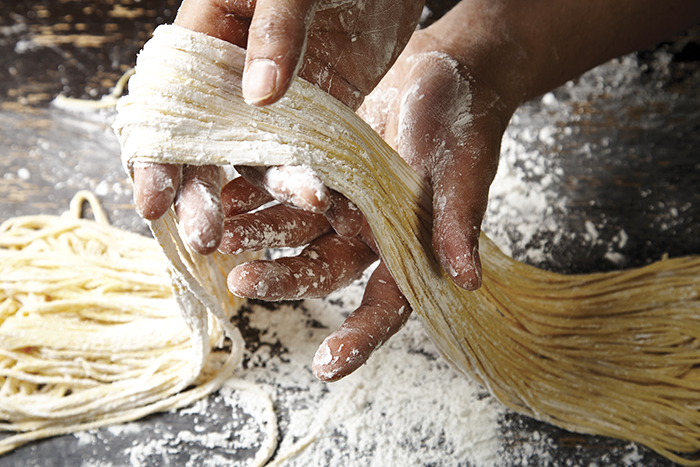
The legend goes that Marco Polo, the famous Venetian explorer, brought noodles from China to Italy. This was during the 13th century. However, some historians believe that pastas in Italy have been around way longer than that. According to some, when the Greeks founded the city of Naples around the 3rd century BC, the natives in the area already had a dish called “macaria” made of flour, barley and water that was dried in the sun. There was also a mention of a pasta-like dish called “laganum” or “laganas,” the ancestor of lasagna.
There is a huge debate over the origin of pasta as many archaeologists trace its origin and existence to Central Asia at a time much before Marco Polo visited these regions. They adamantly argue that pasta travelled westward from Asia to Europe through nomadic Arab tribes. Keeping these stories aside, pasta surely has a global presence and is the most favourite dish of one and all.
Here is a small list of the different types of pasta commonly used in kitchens all over the world, along with some key facts about each one.
PENNE: Penne pasta is small and cylindrical in shape, and is one of the 10 most popular types of pasta in the world in terms of consumption. Born in Sicily and perfected all over Italy, penne is often stuffed with various fillings (e.g., spinach and ricotta) and served in a variety of tomato-based or cream-based sauces.
TAGLIATELLE: This comes in long, flat, ribbon-like strips, and is historically from the Marche and Emilia-Romagna regions of Italy. It is commonly served with chicken or beef, as well as ragu alla bolognese sauce.
MAFALDA: Originated in the Molise region in Italy, this is named after Queen Malfada di Savoia, which is why the alternate name for this pasta shape is reginette (Italian for “little queen”). This pasta is cut into flat, long strips with wavy or ruffled edged features, and is often served with Italian sausage or ricotta cheese.
GNOCCHI: This is a type of dough dumpling that is cut into pieces about the size of a small cork, and is combined with potatoes, spinach, ricotta, eggs, or cheese. It is perfect for salads too.
SPAGHETTI: It is one of the most commonly used pastas in the world. It is said that spaghetti originated in China, and was imported to Venice by way of the popular merchant traveller Marco Polo. Spaghetti noodles are very long, thin and round-shaped, and are served with a wide variety of sauces, meats and vegetables, including marinara sauce, meatballs and mushrooms.
PACCHERI: This originated in the regions of Calabria and Campania, and is large tubular shaped pasta, almost like slices of a garden hose. They are used in soups, lasagne or any type of dish with a heavy garlic overload.
RIGATONI: This is large, tubular pasta with vertical ridges that run lengthwise down the tube. It is slightly larger than penne, and is often served with meat ragu, as well as combined with a variety of light and heavy sauces.
DITALINI: It hails from Naples and resembles a small thimble. It is cut into tubes that are comparable to the size of a kernel of corn, and it is often called “short macaroni” due to its small size. Ditalini is commonly served with ricotta cheese or broccoli, and is great for use in soups.
FARFALLE: It is popularly known as “bow-tie pasta” due to its similar shape, and is often used for dishes that call for light sauces, as well as pasta salads.
MACCHERONI: Also known as macaroni, maccheroni is perhaps one of the most popular pasta styles in the world. It originated in northern and central Italy, and is small, slightly curved, and tubular in shape that makes it very versatile. Maccheroni is commonly used in baked pasta dishes, soups, or tossed with cheese or vegetable sauces.
—[email protected]